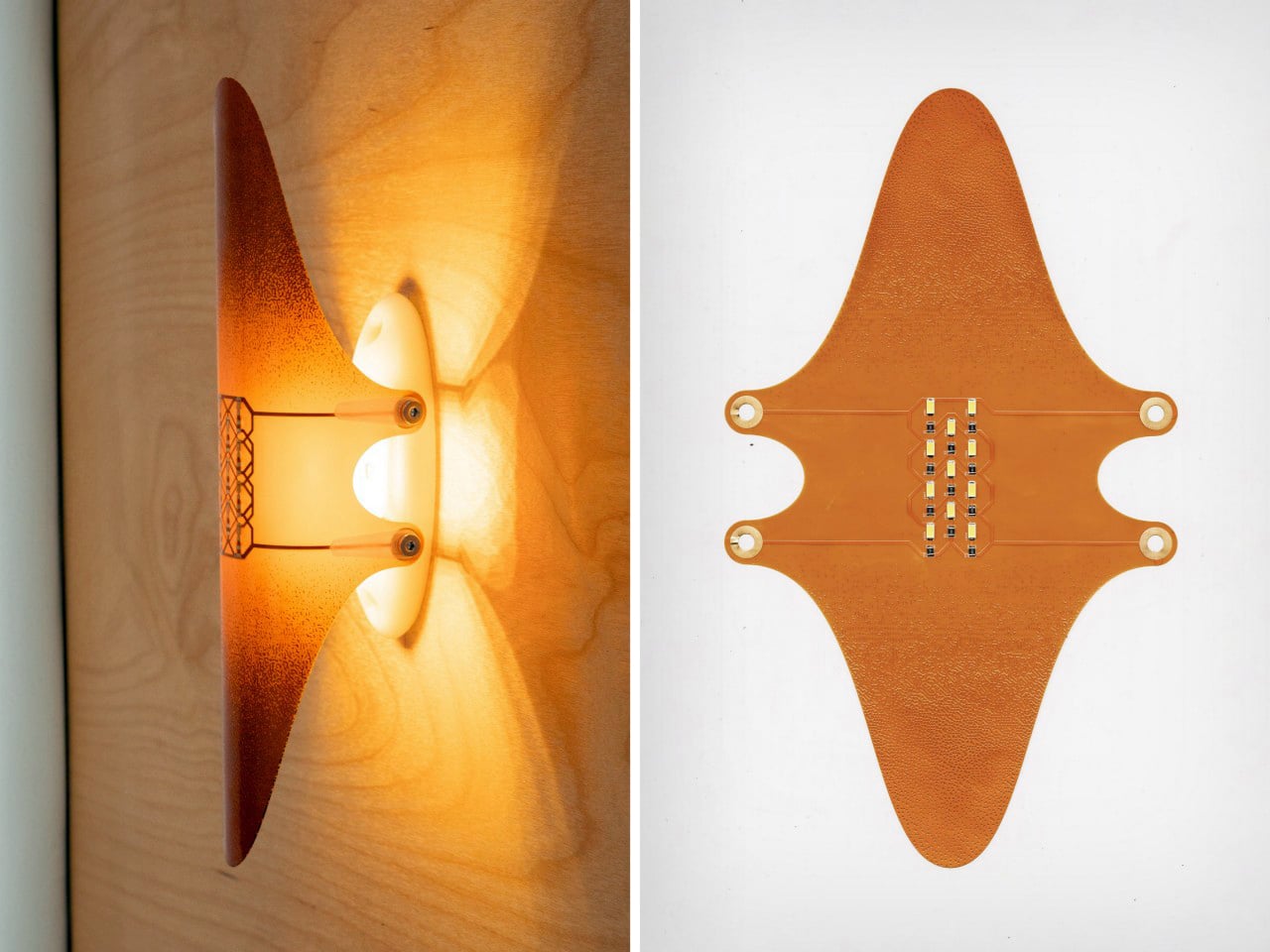
"In contemporary lighting, technology is often concealed, hidden behind frosted diffusers, buried in housings, or tucked into recesses where its presence is merely utilitarian. The Printed Circuit sconce by American designer August Ostrow turns this convention inside-out. Instead of disguising the mechanics of illumination, the sconce makes electronics themselves the aesthetic centerpiece, revealing the beauty of a material more frequently associated with industrial devices than interior design."
"At the core of the sconce is a flexible polyimide printed circuit board, a material prized in the electronics industry for its thermal stability, durability, and ability to bend without losing structural integrity. Commonly found within consumer devices, aerospace components, and advanced industrial systems, polyimide typically remains unseen, functioning behind the scenes as a backbone for electrical pathways. Ostrow repositions this substrate as both shade and light source, allowing the circuitry to take on a sculptural presence within the room."
"The traces, copper routes, and tactile surface details that usually operate invisibly now become the primary graphic language of the design. When illuminated, these pathways glow softly, revealing an intricate network that is part engineering diagram, part textile-like pattern. The sconce becomes a luminous map of its own function, offering viewers a rare opportunity to see the inner logic of circuitry elevated to decorative status."
A flexible polyimide printed circuit board forms the illuminated surface, valued for thermal stability, durability, and bendability without losing structural integrity. The material typically serves unseen within consumer devices, aerospace components, and industrial systems as a backbone for electrical pathways. The design foregrounds traces, copper routes, and tactile surface details, transforming functional circuitry into a graphic, textile-like network that glows when lit. Bending the polyimide into a gentle arc allows it to function as a structural element, a diffuser, and a carrier for embedded LEDs, making electronics both the mechanism and the decorative focus of the fixture.
Read at Yanko Design - Modern Industrial Design News
Unable to calculate read time
Collection
[
|
...
]